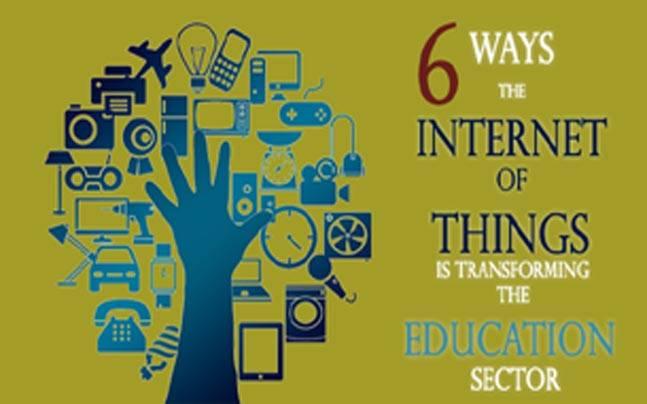As one of the key trends affecting education today, the Internet of Things (IoT) is playing a bigger role in schools everyday.
What exactly is the Internet of Things? It can be complex if you look at the technical side of it, butForbes offers a rather clear-cut explanation: “Simply put, this is the concept of basically connecting any device with an on and off switch to the Internet (and/or to each other).
“This includes everything from cellphones, coffee makers, washing machines, headphones, lamps, wearable devices and almost anything else you can think of.”
With the advancement and increasing speed of broadband networks and WiFi, the IoT is fast becoming a reality as smart cities, homes and buildings become more connected.
Educators are reaping the benefits of using the IoT in schools. Writing forForbes, Daniel Newman said, “While the Internet of Things (IoT) may have yet to pay off when it comes to creating smart cities, it does hold tremendous potential in terms of creating smarter, more connected schools.”
Here’s how schools are using the IoT to their benefit:
Saving energy
📌This week we did a little maintenance to the infrastructure installed in the GRAMSCI-KEYNES school in Prato giving the sensors new ENERGY!Now students are ready to access environmental data in classrooms and real-time weather information and learn how Internet of Things works. pic.twitter.com/ZYzkUsa6NY
— GAIA Project (@EU_GAIA) March 4, 2019
The Internet of Things concept helps schools become more energy-efficient, which also helps them save money.
According toMedium, “Within school buildings and in classrooms smart HVAC systems may help save money and energy by functioning only when needed.”
In England, a government-funded Energy in Schools programme has been extended to 20 schoolsfollowing a successful pilot, using the IoT to help students learn about energy consumption.
EdTechnology reported, “As part of the initiative, teachers and students will learn how the Internet of Things (IoT) can be used to help reduce energy consumption and the carbon footprint of their school, as well as how to save money.

“They will be able to see their real-time energy usage, pricing and carbon emissions data via a Samsung energy management platform, and smart sensors installed throughout the school.”
Communication
Creating quality relationships with parents/caregivers is paramount for a successful student-teacher relationship! Technology has really provided the key stepping stone in making these connections achievable! #ACUedu_p #Communication #EachStudentIsSomeonesWorld
— Jodie Haines (@JodieHaines4) May 14, 2019
Another beneficial role the IoT plays in schools is facilitating communication between parents and teachers.
As Newman writes, “Using real-time communication tools, they can share homework assignments with parents so they can stay on top of less communicative children. These tools can also let parents know when their child is absent from class.
“Using time-stamp technology, they can alert parents and students when an assignment has gone missing. The bottom line is that the IoT has the chance to keep all of us more connected, engaged, and on our toes. And that’s always a good thing.”
Security
Schools, businesses and organizations have more tools for safeguarding students and employees thanks to the Internet of Things #security #cloud #datacenter @CDWCorp https://t.co/rLQtNL0GeL #cdwsocial pic.twitter.com/X9pmJ9ig0z
— Lynn Saratore (@LynnSaratore) June 29, 2018
The Internet of Things also helps keep schools secure.EdTech Magazine reported that it’s one of the most common reasons for implementing this smart technology in schools.
“Top use cases are interactive devices, security-focused technology and energy-saving resources. Interactive devices include wearables that track activity or monitor engagement in class as well as mobile hotspots and laptops that make internet accessible to students without access at home.
“Security uses include smart/connected security cameras, wireless door locks or room access systems, student ID cards with radio frequency identification device chips, text-based emergency alerts triggered by sensors, and connected school bus tracking.”
But there’s no such thing as a perfect technology. Schools must be aware of the potential data breaches and cybersecurity attacks that come along with smart technologies.
As David Andrade, a K12 strategy specialist, writes: “If you look at security breaches concerning IoT, it’s usually because things weren’t set up correctly. Schools should work with security experts when setting up these solutions.There’s a lot to learn for IoT newcomers, so it makes sense to get an expert involved.”
Liked this? Then you’ll love…
What is Holoportation technology and how is it used in schools?
How schools can use technology to help students with disabilities








